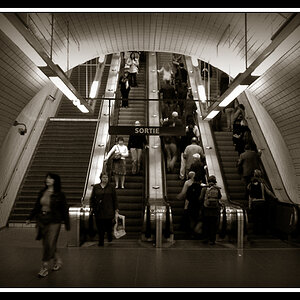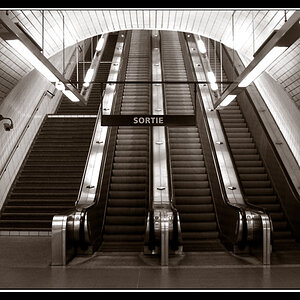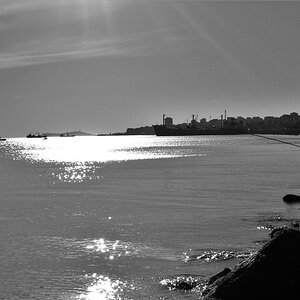Kit Lens Jockey
TPF Noob!
- Joined
- Mar 25, 2016
- Messages
- 17
- Reaction score
- 0
- Can others edit my Photos
- Photos OK to edit
I've tried to find some definitive answers to this question in the past, but I still don't quite completely understand it. I mean, with film, you had a physical piece of light sensitive material, so obviously you need a physical device to only expose it for a set amount of time. Hence, a shutter...
But digital cameras still use this same clunky, prone to wear shutter. Why? Isn't it possible to just electronically read the light hitting the sensor for whatever length of time you want the "shutter" speed to be, and that would be it? Why does there need to be the same physical device there to regulate it in the same way there is with film?
Looking online, the best info I could find was something along the lines of "Well, a digital sensor kind of stores up light that hits it, so it's not as simple as just reading the light hitting it for a certain amount of time." Makes sense, I guess. Maybe the answer is too technical for anyone not working in optical engineering to understand.
But, it does seem like some cameras do go without the shutter, right? Isn't that what this "global" shutter is that I've read about? So is it just that some sensors are capable of operating without a shutter, while some aren't suited to it?
But digital cameras still use this same clunky, prone to wear shutter. Why? Isn't it possible to just electronically read the light hitting the sensor for whatever length of time you want the "shutter" speed to be, and that would be it? Why does there need to be the same physical device there to regulate it in the same way there is with film?
Looking online, the best info I could find was something along the lines of "Well, a digital sensor kind of stores up light that hits it, so it's not as simple as just reading the light hitting it for a certain amount of time." Makes sense, I guess. Maybe the answer is too technical for anyone not working in optical engineering to understand.
But, it does seem like some cameras do go without the shutter, right? Isn't that what this "global" shutter is that I've read about? So is it just that some sensors are capable of operating without a shutter, while some aren't suited to it?





![[No title]](/data/xfmg/thumbnail/42/42397-30faa170de7ed9be38adf00b9b26a220.jpg?1619740167)
![[No title]](/data/xfmg/thumbnail/37/37113-886cb28b1e3fb197bdd00a9148269407.jpg?1619737882)
![[No title]](/data/xfmg/thumbnail/30/30877-ef8d8a8cf110d5566382bb4e8a76fd3f.jpg?1619734492)




![[No title]](/data/xfmg/thumbnail/30/30879-16ad830465e571dee0a784c7fa122909.jpg?1619734493)
